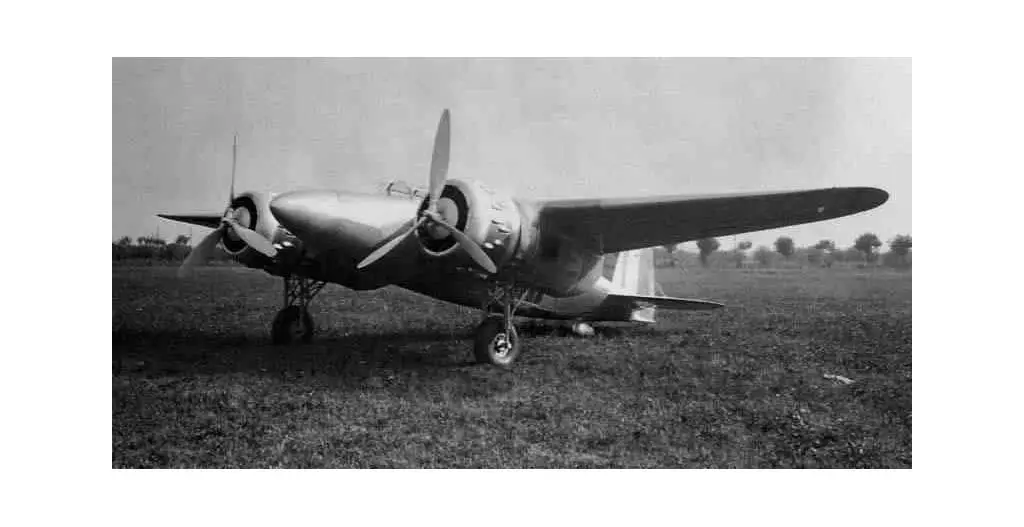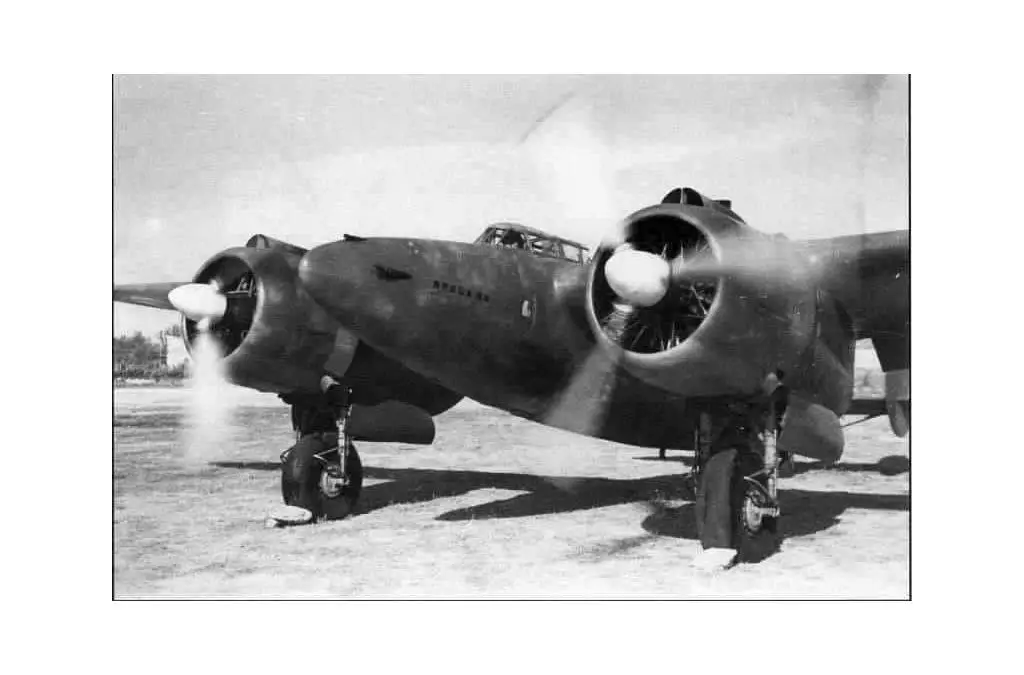Background on the Breda Ba.88 Lince
The Breda Ba.88 Lince is a twin-engine, two-seat ground attack and reconnaissance aircraft. It first flew in 1936 and introduced to the Regia Aeronautica in 1939. Giuseppe Panzeri and Antonio Parano designed the Ba.88 in 1936 with features considered advanced for the time. The aircraft utilized retractable landing gear and presented a very sleek design. The prototype’s top speed of 304 mph impressed many evaluators. Between April and December 1937, Regia Aeronautica test pilot Furio Niclot Doglio broke six world speed records in the Ba.88 prototype. As expected, initial test results showed a lot of promise.

Breda Ba.88 prototype that broke many speed records. Notice the single tail.
But unbeknownst to the Regia Aeronautica, the prototype had been designed for speed with no consideration of how the aircraft will handle after meeting military specifications. The military version of the Ba.88 suffered from poor performance and aerodynamic instability. After several poor showings on the battlefield, the Regia Aeronautica ultimately decided to utilize the remaining Breda Ba.88s as decoys on runways. Breda halted production after completing 105 Linces.
Capabilities
The Breda Ba.88 power plant included two Piaggio P.XI RC.40 Stella radial engines rated at 1,000 hp each. The Lince reached a service ceiling of 26,245 feet and a range of 1,019 miles. Armament consisted of three fixed forward firing 12.7 mm nose mounted Breda-SAFAT machine guns and a manual 7.7 mm Breda-SAFAT machine gun in the rear cockpit. Depending on the configuration, the bomb load capacity of the Ba.88 was 2,204 lbs in the bomb bay or three 441 lb bombs under the fuselage.

A good view of the Breda-SAFAT machine gun positioning on the nose cone of the Ba.88.
Ba.88 Service Record
After Italy’s declaration of war on France and the UK on 16 June 1940, 12 Ba.88 Linces of the 19th Gruppo made bombing and machine-gun attacks on Corsica with little opposition. Three days later, 9 more Ba.88’s attacked Corsica once again. Analysis of these attacks showed the limited value of the Breda Ba.88.
Its uselessness became apparent when Ba.88s of the 7th Gruppo joined the action in Libya against the British. Fitted with sand filters, the engines overheated and the performance deemed unacceptable. A September 1940 attack on Sidi Barani was canceled when the Ba.88s could not achieve altitude due to the insufficient power of the engines.

Breda Ba.88 Lince in flight.
By mid-November 1940, most surviving Ba.88 Lince became stripped of useable equipment and left as decoy targets around airfields.
Variants
Ba.88M: A ground attack version with an increased wingspan and incorporated dive brakes. The Agusta plant in Varese built 43 Ba.88M examples. Additional changes include mounting four 12.7 mm Breda-SAFAT machine guns in the nose cone and replacing the Piaggio engines with Fiat A.74 RC.38 air-cooled radial piston engines rated at 995 hp. With a reduced speed of 239 mph, this variant also underperformed.
Specifications
| Model | Breda Ba.88 Lince |
|---|---|
| Crew | 2 Pilot, Co-Pilot/Gunner |
| Powerplant | (2) Piaggio P.XI RC.40 Stella 1,000 HP |
| Maximum Speed | 304 mph (490 Km/h) at 4000 m |
| Max Ceiling | 26,245 ft (7,999 m) |
| Range | 1,019 miles (1,640 km) |
| Length | 35 ft 5 in (10.8 m) |
| Height | 10 ft 2 in (3.1 m) |
| Wingspan | 358.9 ft (33.34 m2) |
| Weight | Empty: 10,251 lb (4,650 kg) Max: 14,881 lb (6,750 kg) |
| Armament | (3) 12.7 mm Breda SAFAT machine guns (1 )× 7.7 mm rear cockpit 2,204 lbs in the bomb bay or three 441 lb bombs under the fuselage |
